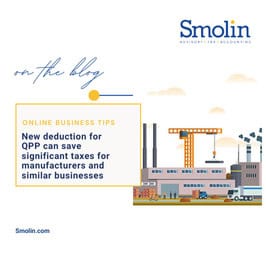Whether you’re selling your business or acquiring another company, the tax consequences can have a major impact on the transaction’s success or failure. So, if you’re thinking about a merger or acquisition, you need to consider the potential tax impact.
Asset Sale or Stock Sale?
From a tax standpoint, a transaction can basically be structured as either an asset sale or a stock sale. In an asset sale, the buyer purchases just the assets of a business. This may happen if a buyer only wants specific assets or product lines. And it’s the only option if the target business is a sole proprietorship or a single member limited liability company (LLC) that’s treated as a sole proprietorship for tax purposes.
Ownership Structure Matters for Tax Outcomes
Alternatively, if the target business is a corporation, a partnership or an LLC that’s treated as a partnership for tax purposes. The buyer can directly purchase the seller’s stock or other form of ownership interest. Whether the business being purchased is a C corporation or a pass-through entity (that is, an S corporation, partnership or, generally, an LLC) makes a significant difference when it comes to taxes.
The flat 21% corporate federal income tax rate under the Tax Cuts and Jobs Act (TCJA), which the One Big Beautiful Bill Act (OBBBA) didn’t change, makes buying the stock of a C corporation somewhat more attractive. Why? The corporation will pay less tax and generate more after-tax income. Plus, any built-in gains from appreciated corporate assets will be taxed at a lower rate when they’re eventually sold.
Permanent TCJA Benefits for S Corps, Partnerships, and LLCs
The TCJA’s reduced individual federal tax rates, which have been made permanent by the OBBBA, may also make ownership interests in S corporations, partnerships and LLCs more attractive than they once were. This is because the passed-through income from these entities will be taxed at the TCJA’s lower rates on the buyer’s personal tax return. The buyer may also be eligible for the TCJA’s qualified business income deduction, which was also made permanent by the OBBBA.
Note: In some circumstances, a corporate stock purchase can be treated as an asset purchase by making a Section 338 election. Contact us for more information. We’d be pleased to help determine if this would be beneficial in your situation.
Seller Considerations in Stock vs. Asset Sales
Sellers generally prefer stock sales for tax and nontax reasons. One of their main objectives is to minimize the tax bill from a sale. That can usually be best achieved by selling ownership interests in the business (corporate stock or interests in a partnership or LLC) as opposed to selling the business’s assets.
With a sale of stock or other ownership interest, liabilities generally transfer to the buyer and any gain on sale is typically treated as lower-taxed long-term capital gain (assuming the ownership interest has been held for more than one year).
Buyer Objectives in Asset vs. Stock Sales
Buyers, however, usually prefer to purchase assets. Generally, a buyer’s main objective is to generate enough cash flow from an acquired business to pay any acquisition debt and provide an acceptable return on the investment. Therefore, buyers want to limit exposure to undisclosed and unknown liabilities and minimize taxes after the deal closes.
A buyer can step up (increase) the tax basis of purchased assets to reflect the purchase price. Stepped-up basis lowers taxable gains when certain assets, such as receivables and inventory, are sold or converted into cash. It also increases depreciation and amortization deductions for qualifying assets.
Keep in mind that other factors, such as employee benefits, can cause unexpected tax issues when merging with or acquiring a business.
Ensure a Smooth Transition with Tax Planning Support
Selling the business, you’ve spent years building or becoming a first-time business owner by buying an existing business might be the biggest financial move you ever make. We can assess the potential tax consequences before you start negotiating to help avoid unwelcome tax surprises after a deal is signed. Contact a Smolin Representative to get started.









